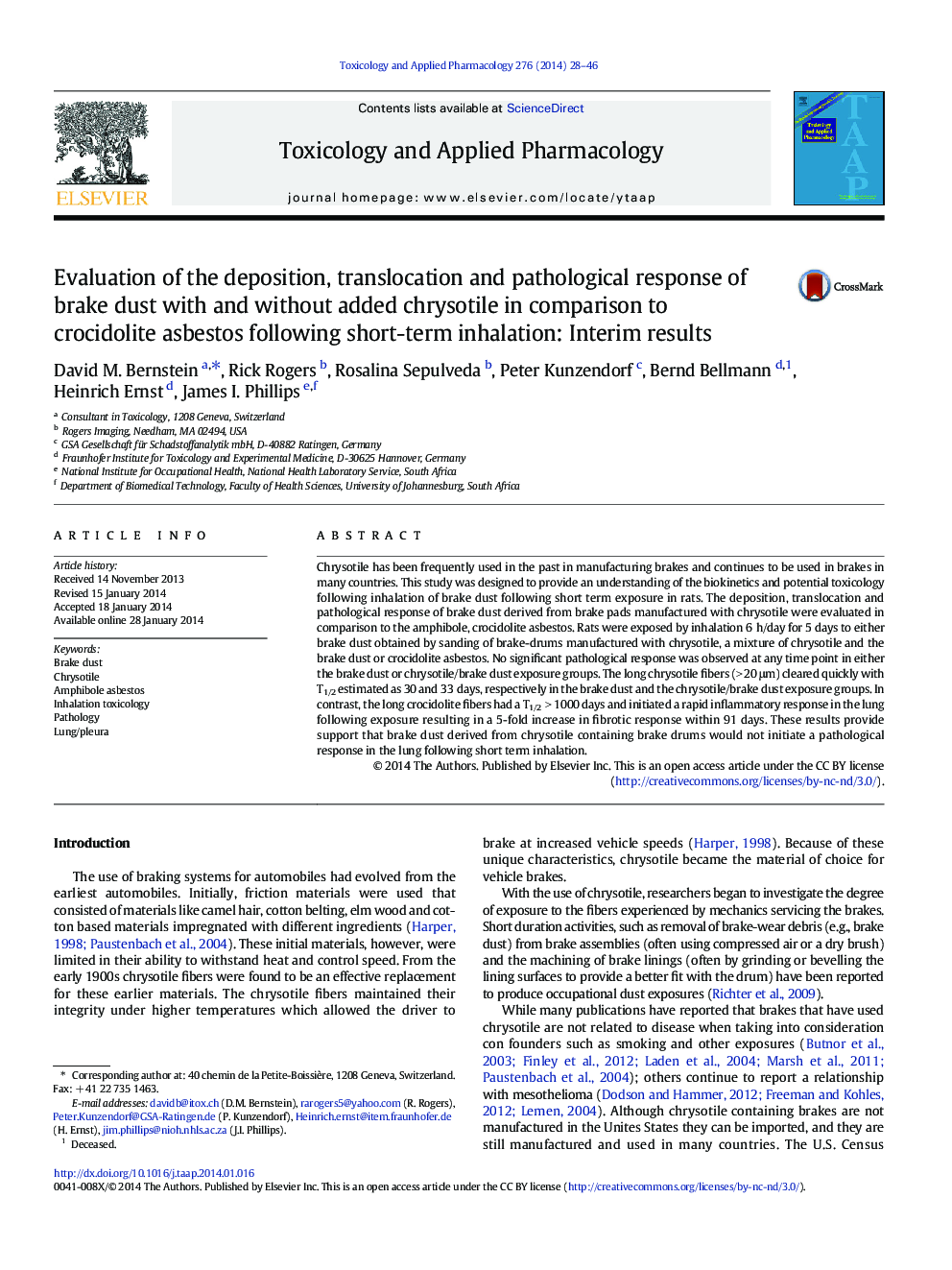| Article ID | Journal | Published Year | Pages | File Type |
|---|---|---|---|---|
| 5846317 | Toxicology and Applied Pharmacology | 2014 | 19 Pages |
Abstract
Chrysotile has been frequently used in the past in manufacturing brakes and continues to be used in brakes in many countries. This study was designed to provide an understanding of the biokinetics and potential toxicology following inhalation of brake dust following short term exposure in rats. The deposition, translocation and pathological response of brake dust derived from brake pads manufactured with chrysotile were evaluated in comparison to the amphibole, crocidolite asbestos. Rats were exposed by inhalation 6 h/day for 5 days to either brake dust obtained by sanding of brake-drums manufactured with chrysotile, a mixture of chrysotile and the brake dust or crocidolite asbestos. No significant pathological response was observed at any time point in either the brake dust or chrysotile/brake dust exposure groups. The long chrysotile fibers (> 20 μm) cleared quickly with T1/2 estimated as 30 and 33 days, respectively in the brake dust and the chrysotile/brake dust exposure groups. In contrast, the long crocidolite fibers had a T1/2 > 1000 days and initiated a rapid inflammatory response in the lung following exposure resulting in a 5-fold increase in fibrotic response within 91 days. These results provide support that brake dust derived from chrysotile containing brake drums would not initiate a pathological response in the lung following short term inhalation.
Related Topics
Life Sciences
Environmental Science
Health, Toxicology and Mutagenesis
Authors
David M. Bernstein, Rick Rogers, Rosalina Sepulveda, Peter Kunzendorf, Bernd Bellmann, Heinrich Ernst, James I. Phillips,
